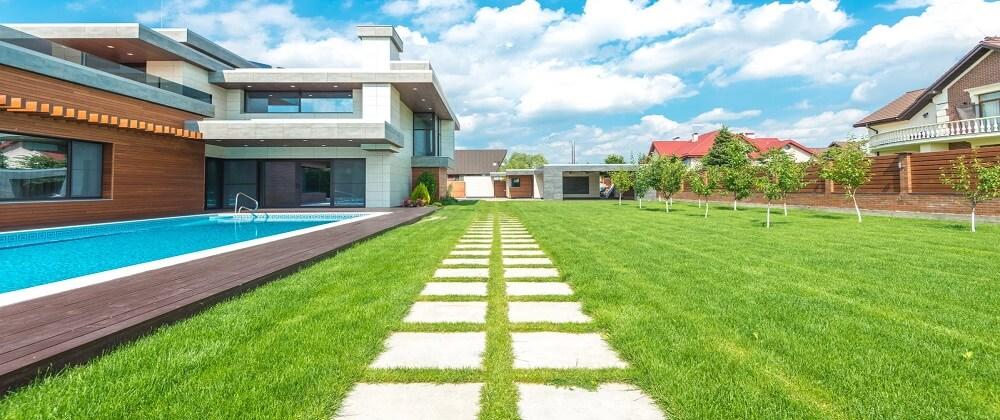
How to Make Grass Green Fast – A Complete Guide
By: ROS Team
A lush, green lawn is the envy of many homeowners, but achieving and maintaining that vibrant green color can be a bit of a challenge. If you’re looking for ways to make your grass green fast, you’re in the right place.
Whether you’re preparing your lawn for a special event, or you simply want to enhance its appearance, there are several steps you can take to rejuvenate your grass and bring back its healthy, green hue.
Fertilize Your Lawn
Fertilizing your lawn is one of the quickest and most effective ways to make your grass green. A well-balanced fertilizer with the right nutrients can give your grass the boost it needs to turn green and thrive.
Look for a fertilizer with a high nitrogen content, as nitrogen is essential for promoting lush, green growth. Apply the fertilizer according to the manufacturer’s instructions, and be sure to water your lawn thoroughly after application to help the nutrients penetrate the soil.
Proper Watering
Adequate and consistent watering is crucial for maintaining green grass. Lawns typically require around 1 to 1.5 inches of water per week, which can come from rainfall or irrigation. To ensure your grass stays green, water deeply but infrequently, rather than shallowly, frequently watering.
Early morning is the best time to water your lawn, as it allows the grass to dry before evening, reducing the risk of fungal diseases.
Mow Correctly
When it comes to mowing, many homeowners make the mistake of cutting their grass too short. Longer grass blades are better at photosynthesis, which is essential for maintaining green lawns.
Keep your mower blade sharp and set it at a height of around 3 inches, depending on the type of grass you have. Never remove more than one-third of the grass height in a single mowing session, as this can stress the grass and result in a brownish appearance.
Aerate Your Lawn
Lawn aeration involves perforating the soil with small holes to allow air, water, and nutrients to penetrate the root zone. This process can significantly improve the health of your grass and promote greener lawns. You can aerate your lawn using aeration equipment or hire a professional to do it for you.
Overseed Bare Spots
If you have bare or thin patches in your lawn, overseeding can help fill in these areas and make your grass appear greener. Choose a grass seed that matches your existing lawn, and spread it evenly over the problem areas. Water the newly seeded areas regularly to promote germination and growth.
Control Weeds and Pests
Weeds and pests can compete with your grass for nutrients and water, leading to a dull and unhealthy lawn. Use appropriate herbicides to control weeds and address any pest infestations promptly. When your grass is not competing with these unwanted guests, it can focus on growing and staying green.
Choose the Right Grass Type
Selecting the right type of grass for your climate and soil is crucial for maintaining a green lawn. Cool-season grasses, such as Kentucky bluegrass and fescue, thrive in northern regions, while warm-season grasses like Bermuda and Zoysia are better suited for southern climates. Ensure your grass type is well-suited to your location to ensure vibrant green growth.
Apply Iron Supplements
Iron supplements, also known as iron chelates, can provide a quick green-up for your grass. They are particularly useful for combating iron deficiency, which often leads to a yellowish or pale appearance in grass. Follow the package instructions for the proper application of iron supplements.
Maintain Good Soil Health
The health of your grass largely depends on the quality of your soil. Conduct a soil test to determine its pH and nutrient levels. Based on the results, you may need to adjust the pH with lime or sulfur and add organic matter to improve the soil’s overall health.
Be Patient
While you can take various steps to make your grass green fast, it’s important to understand that significant changes may take a bit of time. Patience is key when working on your lawn, as it can take several weeks to see substantial improvements.
Where does the Green Grass Grow?
Green grass typically grows in various natural environments, including lawns, meadows, fields, and pastures. It thrives where the right conditions are met, such as adequate sunlight, appropriate soil quality, and sufficient water.
So, green grass can grow in many locations, primarily wherever the necessary environmental factors are present.
Tips for Making Green Lawns Fast
If you’re really in a hurry to green up your lawn, you can apply a liquid iron fertilizer. Liquid iron is absorbed quickly by grass and can produce noticeable results in just a few days.
You can also water your lawn with a mixture of water and seaweed extract. Seaweed extract is a natural fertilizer that can help to improve grass color and growth.
Another way to green up your lawn quickly is to topdress it with compost or manure. Topdressing will help to improve the soil quality and provide your grass with the nutrients it needs to thrive.
How to Make Greener Lawns: Takeaway
In conclusion, achieving lush, green lawns is a goal that many homeowners strive for. By following the tips above and providing your grass with the right care, you can make your grass green fast and enjoy a beautiful, vibrant lawn that you’ll be proud of.
Read Also: How to Reseed a Lawn








